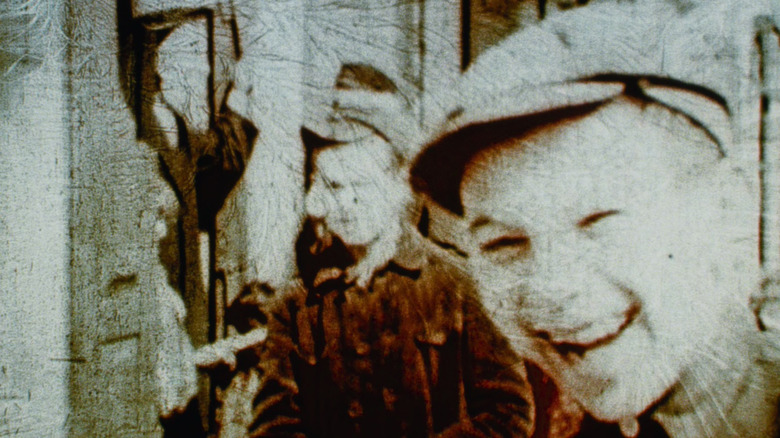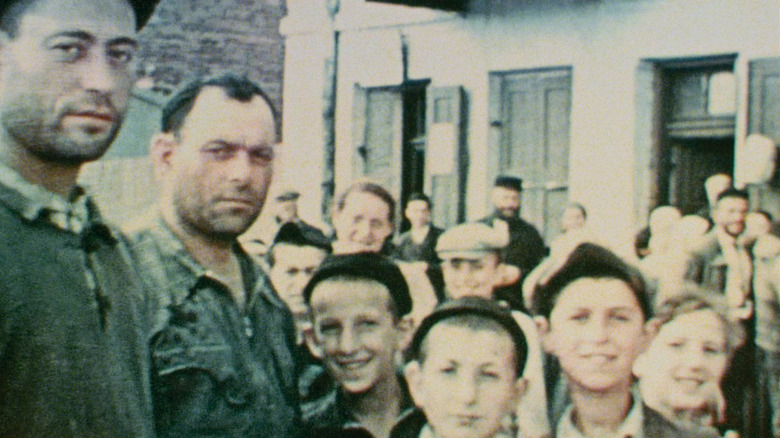Three Minutes — A Lengthening Review: A Haunting Study Of 3 Minutes Of 16mm Footage [Sundance 2022]
"Three Minutes – A Lengthening" is not a ghost story, but it still feels haunting. Or perhaps "haunted" would be a better word, as if the footage itself houses ghosts. Perhaps it does. Writer-director Bianca Stigter has conjured up the past via restored footage, creating a "film essay" that attempts to parse out the truth lurking between frames. In 1938, David Kurtz returned to his small Polish hometown of Nasielsk with a 16mm camera in tow. In 2009, David's grandson Glenn Kurtz found the footage tucked away in the back of a closet.
Running for three minutes, the footage itself isn't entirely remarkable — it captures a street with the locals gathered and grinning, waving their hands, amused by the sight of a movie camera — a device we now consider antiquated, but likely seemed like something from the future to folks in a small Polish town in 1938. There's no narrative; no dialogue. But there is a story, albeit one that David Kurtz likely didn't predict when he pointed the camera at all those faces. Because nearly everyone in Nasielsk, and by extension nearly everyone in the footage, was murdered during the Holocaust.
What can we learn from this footage? Glenn Kurtz, who wrote a book about all of this ("Three Minutes in Poland: Discovering a Lost World in a 1938 Family Film"), tells us via narration that his first goal was to try to identify all the people in the footage. But that seemed almost impossible — Glenn's grandfather was deceased, and he had almost nothing to go on other than the footage itself. It became a kind of unfeasible treasure hunt; a search for answers where no answers seemed possible.
For "Three Minutes," much of the footage has been restored via VFX, with the hopes of giving us a clearer picture. But all that truly remains are the details. Little bits of digitally rendered detritus that must be studied and sifted through. Shadows, weather reports, store signs that can't be read, objects that can't be understood — all of these things swirl about, daring us to find meaning in them.
The Past and the Present
In his attempt to decipher the footage, Glenn Kurtz traveled across the "United States, to Canada, England, Poland, and Israel, to archives, film preservation laboratories, and an abandoned Luftwaffe airfield," and in the end, "encountered seven living survivors from this lost town, including an eighty-six-year-old man," who is 13-years-old in the 1938 footage. But "Three Minutes" isn't really about Glenn's search (although if someone wants to go ahead and make a documentary about that, they should, because it sounds like a compelling story). Instead, director Bianca Stigter wanted to use the film to answer a question: "could you make those three minutes last longer, to keep the past in the present?"
"Three Minutes" travels frame by frame through the footage, with narration from Helena Bonham Carter. Maurice Chandler, the man who was 13 when the footage was taken, also provides insight. But what, if anything, can we take away from the footage? On the surface it is innocuous; even charming. But every single second packed into those three minutes is loaded with the terrible, horrifying weight of the future. Nearly everyone the camera captures has a smile on their face. They are blissfully unaware of what lies ahead. But we, firmly stuck here in the future, know the truth. We know that nearly everyone glimpsed here will be murdered, and there's nothing we can do to stop it. We can only watch and reach out towards the past, our fingers grazing through flickering light the way they might pass through a spirit.
I don't imagine "Three Minutes – A Lengthening" will be something overly buzzed-about out of Sundance. It previously played the Toronto International Film Festival last year and I don't remember much acknowledgment of it then, either. It is not the flashiest of documentaries. It is not the type of thing that eventually ends up on Netflix, where you can comfortably have it on in the background while you scroll through the phone. And even though it's only a little over an hour long, the pacing — which is what I'd call "deliberate" — is not entirely easy to sit through, especially since there is not so much a story to follow. But I hope you'll seek out "Three Minutes," and let the weight of it all sink into your thoughts as those ghostly faces look back at you from all those decades ago.
/Film Rating: 8.5 out of 10

